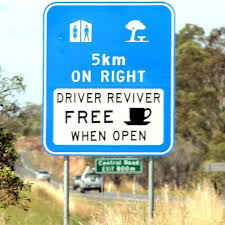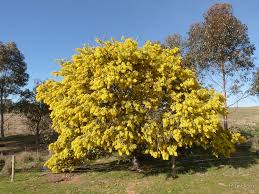 Beautiful weed
Beautiful weed
Around my favourite walk to the top of Red Hill and back, I used to have two favourite trees.
One is an elm growing not far from home, reached when the walk is nearly completed. I think of it as ‘Pella’s tree’ and touch it reverently each time I pass. It’s a three-minute walk from the house and was the sanctuary to which Pella retreated when she had fallen out with a parent or sibling and needed some individual sulk time.
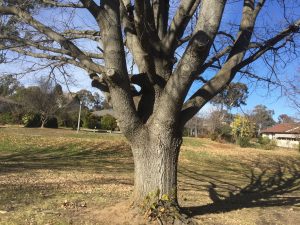
It was not until very recently that anyone else knew of the tree and its salving purpose. Pella reports that, notwithstanding the frequency with which she may have sought its low-slung branches and its safe cleavages, no-one ever noticed that she had absented herself from the house. So after a modest amount of time being ignored, uncalled for and unmissed, she would find her way back home and resume normal activities.
The other special tree was first of the two, both in the extent of its favouritism and in the chronology of its being reached. (Only once did I go round the route of the walk in the reverse direction, with the whole world seeming to be topsy-turvy as a result.)
It became a favourite in August 2016. I had retired in June and took to walking the route that month, sometimes in near-dark and always in the cold. Spring and warmer weather seemed miles away. Suddenly, some time in early August, that particular tree provided a burst of bright yellow wattle popped into view and provided much-needed confidence that the winter would end.
This otherwise modest tree was the first to blossom; it therefore was invested with a particular dignity and significance. It was soon followed by cohorts of others that became lit up with the proud, bright yellow confirmation that better days had arrived.
The normal cycle ensued. With the inexorable march of time the yellow battalions were browned off, seed pods took the place of blossom and the eye adjusted for the new bright colours of Autumn.
But every time I arrived at and passed that tree, I remarked its special status. It had been the first on the whole hillside to burst into flower.
On a cold, wet day just last week I found a break in the weather and went outside and around.
That special tree had been chopped down.
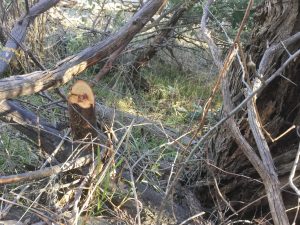
The cut was close to the ground: a neat, pale, sloping cut made with some force and expertise. The whole of the tree’s body, which had stood a little taller than me, lay close at hand, the blossoms prematurely browning and wasted.
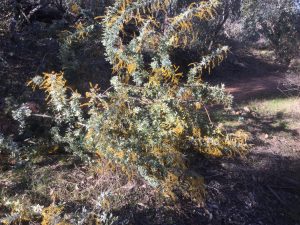
Its crime? It was Acacia baileyana.
Hanging on the fence near where I leave the bush track is a small notice:
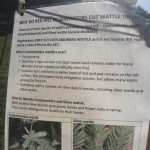
Why do Red Hill regenerators cut wattle trees? There are two main species of wattle growing on Red Hill – Cootamundra wattle (Acacia baileyana) and silver wattle (Acacia dealbata). Acacia baileyana is a small tree from 3 to 10 metres high. It is one of those species which retain the fern-like, bipinnate foliage throughout their lives (in most other species, the bipinnate foliage is replaced by flattened stems called phyllodes). The pinnae (the divisions of the pinnate leaves) are up to 30 mm long and silvery-grey in colour. The plant has smooth, greyish brown bark. The bright yellow flower clusters are globular in shape and are produced in the leaf axils in late winter to spring. Regenerators only cut Cootamundra wattle as it is not local to this region and is a Class 4 pest in the ACT. Why is Cootamundra wattle a pest? Fast-growing Seed has a high survival rate (soil stored seed remains viable for many decades and germinates prolifically after fire) Excludes light and forms a dense layer of leaf and pod remains on the soil surface. This eliminates many indigenous species, but allows many exotic grasses to flourish Hybridises with a number of other Acacia species, including silver wattle and black wattle
So remember: beauty can be in the eye of the ecologist.
Notes:
Acacia baileyana is a small tree from 3 to 10 metres high. It is one of those species which retain the fern-like, bipinnate foliage throughout their lives (in most other species, the bipinnate foliage is replaced by flattened stems called phyllodes). The pinnae (the divisions of the pinnate leaves) are up to 30 mm long and silvery-grey in colour. The plant has smooth, greyish brown bark. The bright yellow flower clusters are globular in shape and are produced in the leaf axils in late winter to spring. (Australian Native Plants Society)
Acacia dealbata is a large shrub or medium-sized tree to about 30 metres high. It is one of those species which retain the fern-like, bipinnate foliage throughout their lives. The pinnae are up to 55 mm long and usually bluish-grey in colour. The plant has smooth, greyish green to dark grey bark which becomes fissured with age. The pale to bright yellow flower clusters are globular in shape and are produced terminally or in the leaf axils in late winter to mid-spring. (Australian Native Plants Society)
[1] I am not confident that, without the signpost, the source will be recognised.



